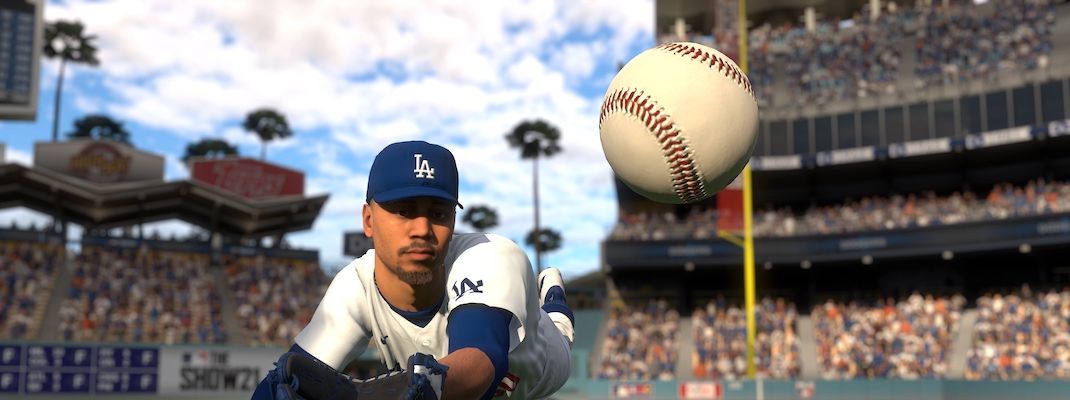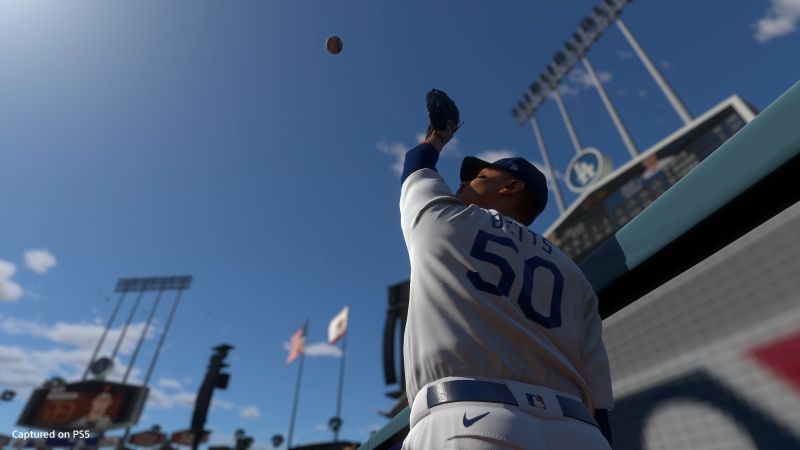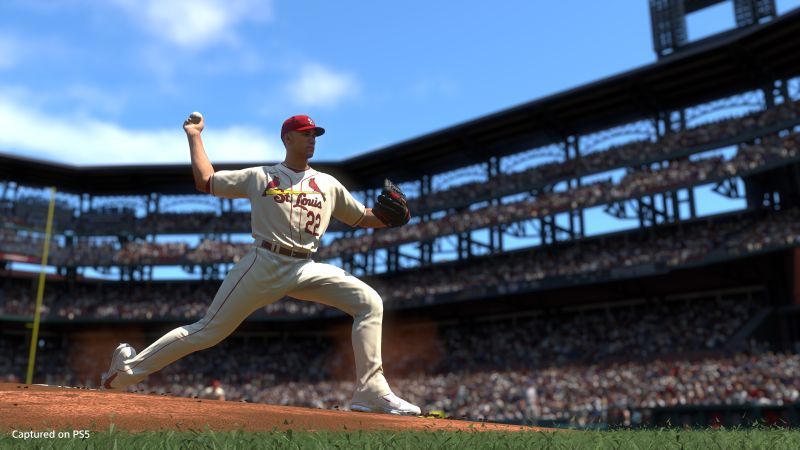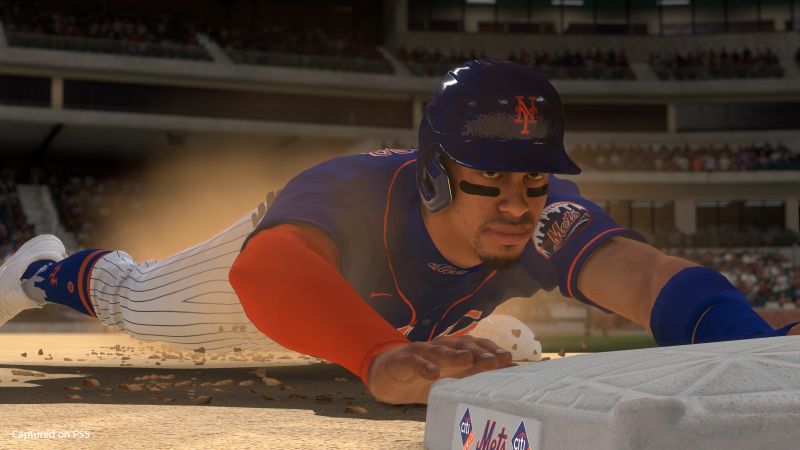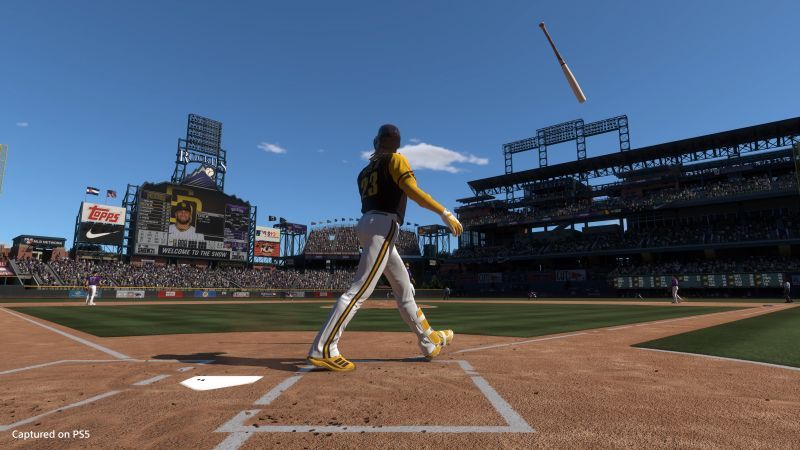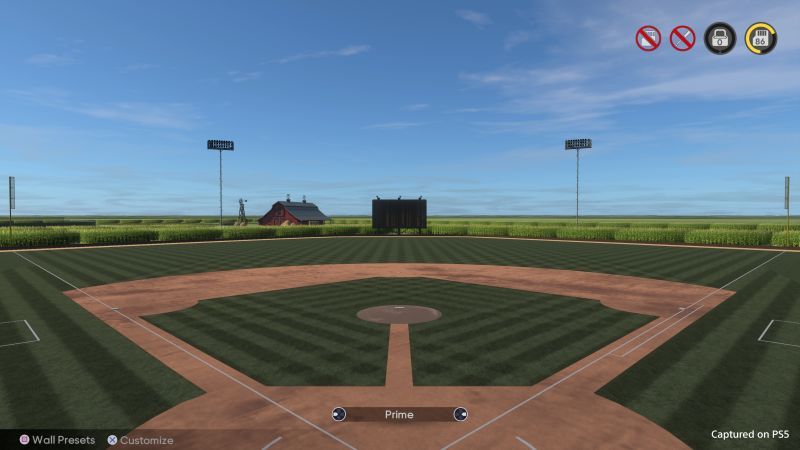There's one sports series that reigned supreme to me in the late 90s and early 00s and that's MLB The Show. There were always bits and pieces that made several different baseball games great leading up to the turn of the century, but not a single game could put it altogether. It's safe to say that the San Diego Studios baseball offering has accomplished this for the last fifteen years. Unfortunately, owners of PlayStation consoles were the only baseball fans who had access to the sports game that best represents its actual sport. This changes in 2021 as MLB The Show 21 makes its first appearance on Xbox consoles. If you have never had access to MLB The Show and are even a casual baseball fan, MLB The Show 21 will blow you away. For annual players, there are enough improvements you will appreciate. In terms of a generational leap to the latest consoles, however, MLB The Show 21 leaves a lot to be desired.
MLB The Show 21 offers literally everything you will see on gameday with full MLB teams, rosters, stadiums and even minor league rosters reaching back to Double-A teams. For years, casual viewers could easily be tricked into believing they were watching a real broadcast. Everything from the atmosphere and the presentation in the game properly captures the sport unlike any other sports game out there. The biggest issue for yearly players has been the lack of changes to this experience, but it will blow the minds of new players. For MLB The Show 21, one of the more appreciable changes comes in the way of the menu system. It's much less convoluted and easy to use on top of being much more visually appealing. This transitions over to the broadcast presentation which is much improved with a lot of subtraction. While you still have the choice between either the MLB Network presentation during a game or The Show's presentation, the later offers a good bit of information such as exit velocity speed on hits and a chart to show the swing timing. The visual design also feels like a vintage TBS Network broadcast. Highlights are also back at the end of games that show the key moments over the past nine innings and this is welcome and completes the television broadcast feel.
The four big modes for MLB The Show return this year and it starts with Road to the Show. This is the MyPLAYER of the game, and arguably this series was the pioneer of the individualistic mode we see in sports games today in terms of how they function. RTTS gets a big overhaul this year and it starts with how your player is created. This is simplified in terms of access to the player as the profile is mapped to the main screen of the game. You can quickly create and edit your player, but now you won't be choosing a position. MLB The Show 21 has introduced Archetypes into its player creation as this provides a bonus to certain statistics that you want your player to lean towards. Whether it be hitting, pitching, speed or fielding, you will be able to map three different archetypes. From here, you will enter RTTS and there's a much different way to play.
While the core of RTTS remains with working your way up to the Majors and only participating in the plays your player is involved in, the way it starts out is new for this year. In the past, you would get scouted and build up attributes and try to make a name for your player to get noticed. The mode still includes the selective text messages, but it doesn't offer a ton of result diversity. RTTS seems to be steered more towards a narrative, but that's a light take on that. San Diego Studios has incorporated video from analysts at the MLB Network to provide generic takes to try and create hype for your player. You are immediately drafted and have the choice to choose the team you'd like to play for or go random. This is with no context to see what your player's worth is. You get selected by a team and get thrown into Double-A competition. Your coach will try you out as a two-way player and this is spread out across the schedule. The switching does provide a good refresher outside of the redundancy that the mode can become. This is different, but helps speed the process of the determination of what direction your play style goes towards. Traditionalists may not like the way the mode has been changed, but it offers a completely new feeling for the mode that was needed.
A nice touch that San Diego Studios adds this year is the ability to take your RTTS player over to Diamond Dynasty. This is the card-based mode where you build your team. MLB The Show 21 still offers tons of challenges to grind towards cards and some remain superbly difficult. Whether it being playing Conquest, which is basically like Risk, or doing the Battle Royale that has you drafting a team to play and earn stubs, there's still a lot of ways to play the mode. Diamond Dynasty still remains the best card-based mode in any sports game as your roster has more staying power and you can remain competitive without spending money. These cards can also be upgraded to different levels this year, which adds even more staying power for the cards you have either bought or earned. Individual positions in baseball just stand out better than the other sports and you won't really ever have a giant hole in your lineup. If there have ever been a card mode worth playing, it's Diamond Dynasty.
Players can also compete in 162-game seasons, online custom leagues, MLB Playoffs and the Home Run Derby. The other two major modes that return are Franchise and March to October. Once again, Franchise remains largely unchanged and may feel more simplified due to the change in the menu interface in the game. The daily news report returns that provides scores and more, and it's still better implementation than any other sports game on the market. The big changes went into altering trade logic and how teams decide personnel decisions. Attributes play a bigger decision in building teams and this is a change that you won't largely notice for some time. Franchise Mode still requires the player to play or simulate 162 games, but that's why San Diego Studios introduced March to October a few years ago.
March to October will have you playing key moments across the 162 game schedule without doing the Franchise ins-and-outs. It also features micro strategy to help create hot streaks for your players and team as a whole. San Diego Studios has added new intro videos for each team this year that are awesome. It would be nice to view all these in one section in the game. Again, don't expect a change here if you're a returning player to the series, but this is a quicker way to play seasons for new players. It still remains with the series that there aren't giant changes from year to year as this mode was the last big change that was seen, but there's a lot to play here for Xbox players that are new to the series.
As for the product itself on the field, the team at San Diego Studios has implemented a ton of new defensive animations. Fielding should look a lot different as there are a variety of new fielding animations and can allow for some excellent looking plays on the field. The Show has always offered a variety of different ways to hit, pitch and field. The team has added a new pitching mechanic this year that's aimed to up the difficulty for pitching. This allows players to follow an analog stick command to throw each pitch as it feels similar to what was seen in the 2K series years ago. Throwing aim has also returned and is much more playable than it was last year when it was introduced. This is mainly thanks to the frame rate increase of the next generation consoles. The timing is much easier to get down as the button needs to be released in the green zone of the meter. Hitting offers either timing, zone or analog and the hits variety still seems stale. This may due to using the timing mode, but it still doesn't feel like the variety is there. What seems to have been removed was the nerfing of first pitch hits and this may depend on the specific hitter at the plate. On top of the Archetypes, the team has also introduced what it calls Quirks. These can include smaller attributes such as Night Player that provide boosts in certain situations. Overall, the gameplay on the field feels like an improvement over the past years, and not just because of the frame rate increase.
For next-generation players, there was one major element added to the game. Stadium Creator allows users to create stadiums from the ground up with a plethora of assets and backdrops. You can alter everything from the field and the dirt to the wall textures, placement and distance. These can be substituted for other stadiums in various modes up to a certain amount. Stadiums can also be shared and downloaded. In terms of creating a stadium, the process can take a minute to fully understand, but still feels clunky in terms of navigation in the mode. The amount of depth here is impressive and it would be cool to see if the team will allow users to import items or backdrops in the future.
The visuals have always been a bright spot for this series, as the realism with player models and stadiums are easily mistaken for real life. The way the cutscenes are treated like a real broadcast and the detail of the player faces is simply surreal. It's safe to say that most had high expectations for the next-generation version of the game, but unfortunately it falls flat in terms of missing out on its potential. There's little difference between the new generation and previous generation version of the game. Yes, players can expect 4K resolution and 60 FPS, but this was also accomplished with playing last year's game on the PS5. What does seem to be improved is the lighting and reflections off of helmets and bats. Player sweat also seems to cause a reflection that adds more realism. What still hurts the title the most is the inconsistency of low level assets that I'm beginning to wonder if they date back to the PS3 launch. Items in the distance or even the textures used for the dirt of the grass hurt the immersion. It seems more that this is an unlocked previous-generation title with faster load times, but something needs to be done about these old assets.
Two aspects that are particular to the PS5 are also severely lacking in MLB The Show 21. 3D Audio doesn't really seem to be a thing when wearing a headset. You would think that with crowd chants or even player chatter that 3D audio would be apparent, but it doesn't seem to be here. Haptic Feedback is included in the game, but where I noticed it the most was when opening card packs. One big improvement that comes from using the DualSense controller comes with painting the edges of the strike zone when pitching. In the past, the vibration was too much to keep the cursor steady and this is no longer a problem. Unfortunately, this is the only time I noticed it. Heated situations don't seem to trigger anything nor does sliding or hitting. It's underwhelming and yet another missed opportunity. I honestly had to check if I was playing the correct version of the game.
The sound quality remains impressive in the game and for once the soundtrack helps to create a baseball atmosphere. The audio seems to be edited well into the cutscenes between innings and further pushes the excellent broadcast feel. It's an impressive soundtrack that includes AC/DC, old Juvenile, The Strokes, Foo Fighters and more. It all just works, but what isn't working still is the broadcast team. Matt Vasgergian continues to handle the main commentary duties with two color commentators that quickly become repetitive. It really is time that San Diego Studios looks elsewhere and implements multiple radio personalities or more personalities from the MLB Network. They do have this at their disposal. The sound effects on the field are still top notch and properly capture game especially with crowd interaction.
Online play has been the biggest knock on the series for some time. A game that requires precise timing shouldn't be this inconsistent. The one thing I can say is the matches that I played, this does come off as the most playable version I've seen online, but it's not close to be where it needs to be. No match will be the same in terms of timing thanks to the connectivity issue. Matchmaking in Ranked Seasons seems to still be off as either a team is stacked or the opponent is good. The best description is that online play in MLB The Show 21 is more serviceable than it's ever been, but with the sales coming from microtransactions and the fact this is on two separate console families now, there isn't an excuse going forward for connectivity issues.
Closing Comments:
San Diego Studios continue to try and improve an annual product that already has a fantastic core with MLB The Show 21. New Xbox players will be blown away at the realism and the gameplay options in the game while PlayStation players will appreciate the changes to the presentation and some of the visual improvements. The four main game modes don't see any huge changes outside of Road to the Show, which may nab a mixed reaction from fans on how it was designed, but personally I feel it's a good if unnecessary change. The visuals are still great, but there are next to no next-generation implementations across the board outside of running at 4K and 60 FPS, which does change the game especially if you didn't try last year's title on PS5. Whether on PlayStation or Xbox, MLB The Show 21 remains the gold standard for realistic sports games.

